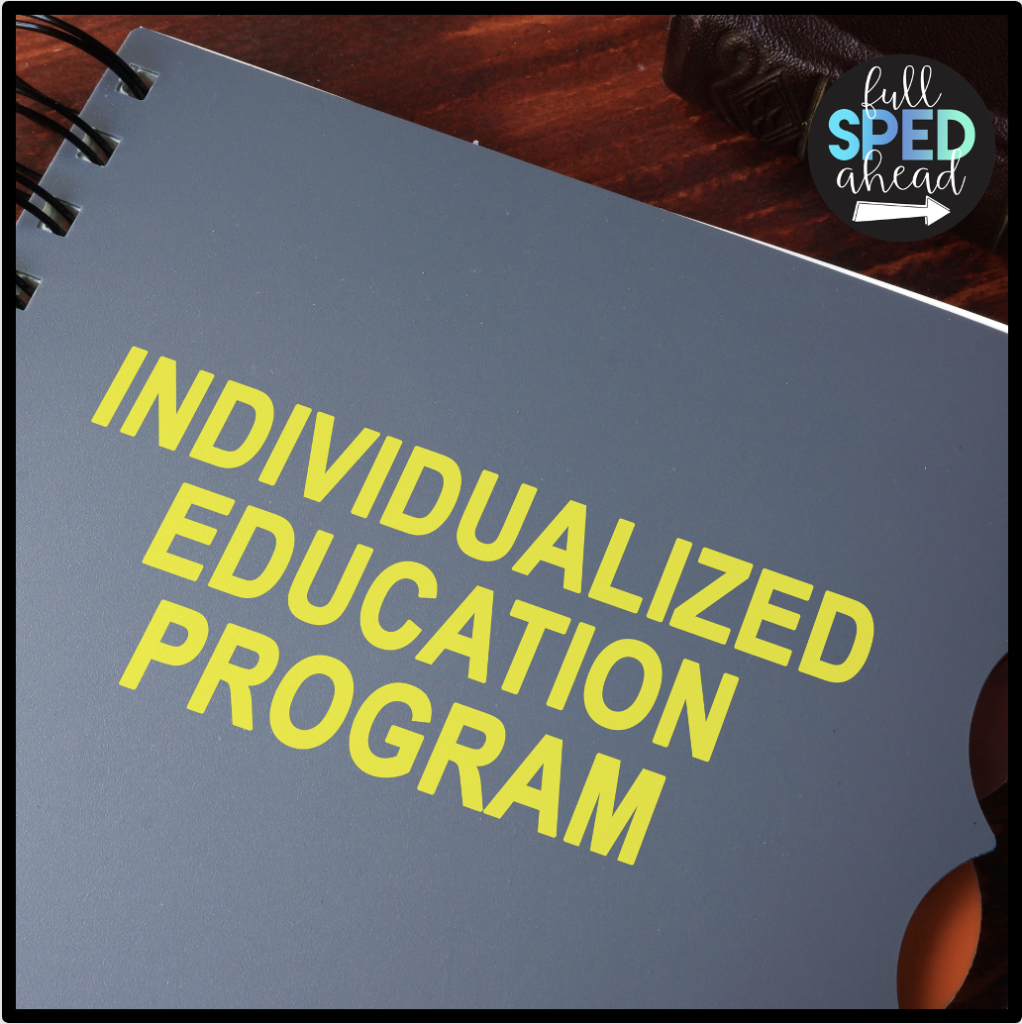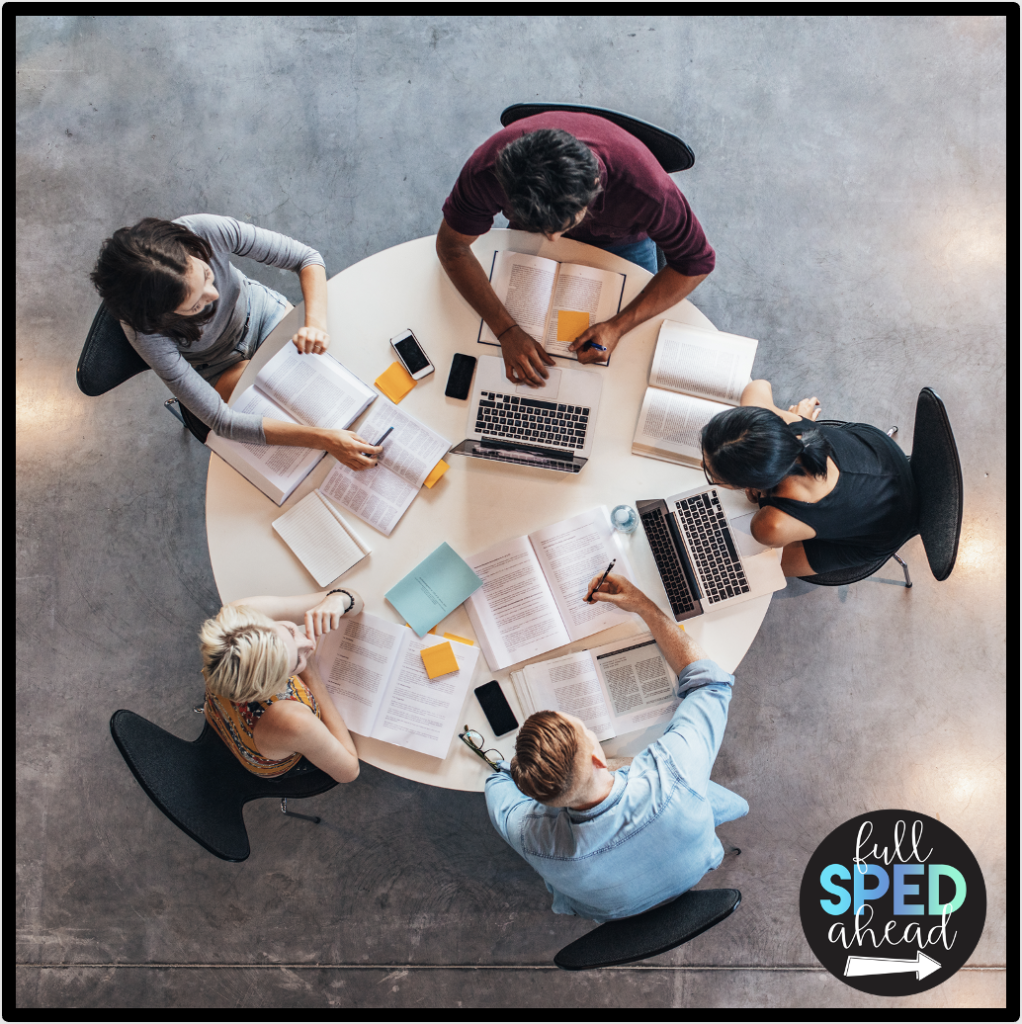I am excited to introduce this week’s guest blogger, Meredith from Meredith Mitchell’s Methods, she is here to chat all about how to have a collaborative IEP meeting.

A collaborative IEP meeting approach is needed when working to develop an IEP. Collaboration helps us solve problems, learn from each other, and improve our work. There are things that can help with collaboration at an IEP meeting. Here are a few tips: be an active listener, participate in the discussion, stick to the agenda, and celebrate everyone’s accomplishments.
Individualized Education Program (IEP) meetings play a crucial role in providing appropriate support and services to students with special needs. To ensure these meetings are collaborative and productive, it’s essential for all participants to actively engage, listen attentively, follow structured agendas, and focus on highlighting student strengths. In this blog post, we will explore key strategies and importance of collaboration in IEP team.
Want to know the importance of IEP meetings and how to be ready for an IEP meeting?
In IEP team meetings, it is vital to listen to understand others’ viewpoints. When you are an active listener, you are fully engaged and immersed in what the other person is saying. It is important to keep good eye contact, be patient, and reflect on what you have heard. This can be helpful when discussing new goals, a child’s progress, and least restrictive environment.

The special education teacher should not always be the one talking at the IEP meetings. It should be an equal partnership between the team members. Parents and general education teachers need to know that it is alright to bring up your own ideas and suggestions at the IEP meeting. Bring a planning sheet or send in a list of things that you would like to be placed on the agenda. Discuss the child’s progress and have data to support the goals. Assigning roles at the collaborative IEP meeting can also help. True collaboration happens when everyone participates in the discussion.
One of the most effective ways to ensure a collaborative IEP meeting is to establish a well-structured agenda. Prior to the meeting, share the agenda with all participants so they can come prepared and have a clear understanding of the topics to be discussed. The agenda should include essential components such as reviewing current goals, discussing progress, identifying areas of concern, brainstorming solutions, and setting new objectives. By adhering to the agenda, participants can stay focused, make the most of the meeting time, and address each student’s unique needs systematically.
Grab this free IEP meeting agenda download below!
Agendas should be created for each IEP meeting. The agenda should state the purpose of the meeting and what will be discussed. Parents and Teachers should give their input on what should be included on the agenda. I have found if you send it in advance if possible to all team members to review it can help the collaboration process. The agenda should be agreed upon. No surprises should happen at a collaborative IEP meeting. This breaks the trust of all team members and stops collaboration.
It is important to acknowledge accomplishments at the collaborative IEP meeting. Celebrate the progress the child has made. Saying thank you to the child’s parents and general education teacher can also be beneficial. Make sure you recognize all the work the team has done to help the child on their journey at school. Collaboration at a collaborative IEP meeting is crucial to building the team you need for the child to be successful.

While addressing areas of concern is important, it is equally crucial to highlight and celebrate student strengths during collaborative IEP meetings. Recognizing and leveraging a student’s abilities and interests can provide valuable insights for designing effective interventions and accommodations. Encourage team members to share success stories, positive observations, and unique talents of the student. By shifting the focus to strengths, the IEP team can foster a positive and empowering environment, instilling confidence in the student and promoting a strengths-based approach to their education. This is critical to have a collaborative IEP meeting.
The most valuable resource that all teachers have is each other. Without collaboration our growth is limited to our own perspectives
– Robert John Meehan.
Collaborative IEP meetings are essential for creating meaningful educational plans and supporting students with special needs effectively. By actively listening, utilizing structured agendas, and highlighting student strengths, the IEP team can work together more effectively, fostering a collaborative spirit and promoting positive outcomes for students. Remember, a successful IEP meeting is not just about discussing challenges, but also about celebrating victories and finding innovative ways to empower every student to reach their full potential.
Remember, the key to a successful IEP meeting is open communication, active participation, and a shared commitment to the student’s well-being. By implementing these strategies, special education professionals can transform IEP meetings into collaborative spaces that promote student growth, enhance family involvement, and ensure the best possible educational experience for all.
Taking your own IEP minutes? Read this blog post!
Want more ways to have a collaborative IEP meeting? Read more here!
What are you looking for?
COPYRIGHT © 2025 Full SPED Ahead